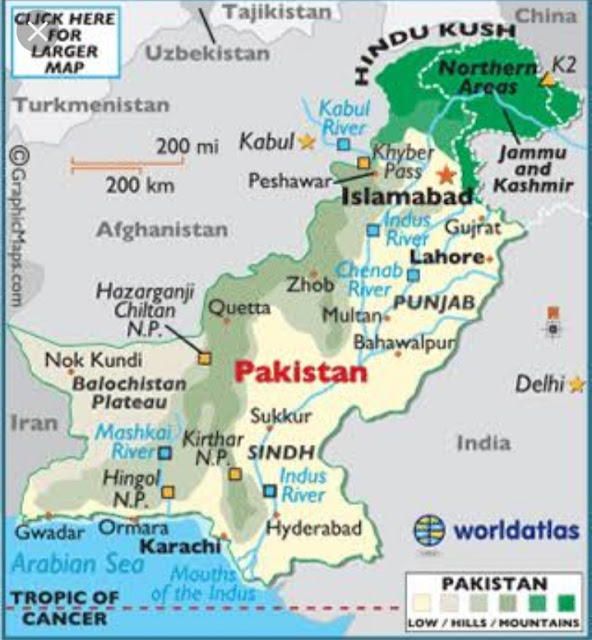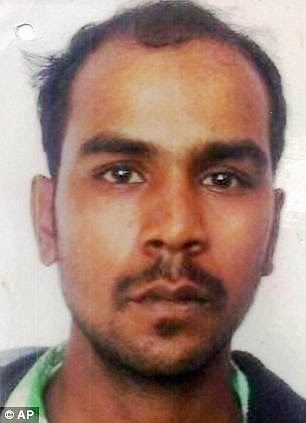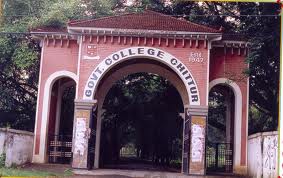Balochistan It's History and Future
As we know "Balochistan" got independence from British well 4 days before India and Pakistan got its independence, i.e on 11th August 1947.
Pakistan parliament chant "Modi", "Modi"...
Live video
The basic information which we should know about "Balochistan" is that, During British rule, there were several princely states under certain treaties. Among them some were directly ruled and some of them were not directly ruled by the British Empire. Such princely states were free to take their own internal decisions. These princely states had the right to merge with either India or Pakistan or declare themselves as independent nations. One of them was the princely state of Balochistan (Kalat, Kharan, Los Bura and Makran). Balochistan expressed its desire to remain independent.
Pakistani military's atrocities on Balochistan citizens...
A joint declaration was signed on 11 August 1947 between the Muslim League and Kalat. In this declaration, it was held that Kalat is not a British Indian state and that it had a distinct identity of its own. The Muslim League accepted Kalat’s independence.
On 4 August 1947, Lord Mountbatten and MA Jinnah, who used to advocate a free Balochistan, attended a commission. On 11 August, the independence of Balochistan was declared. As promised, it was to become a separate nation. On 1 April 1948, however, the Pakistan Army invaded Kalat and forced Kalat’s Khan to surrender. Later, on 27 April 1948, Pakistan captured the entire Balochistan.
The Baloch nationalist movement considers Mir Ahmed’s dynasty of Kalat established in 1666 as its base. After Mir Naseer Khan accepted Afghan subjugation in 1758, the boundaries of Kalat spread to Dera Ghazi Khan to the east and Bandar Abbas to the west. With the help of Nadir Shah of Iran, the Khans of Kalat collected the Brahui tribals and came to power.
After the First Afghan War (1839–42), the British took over the region. In 1869, the British mediated a quarrel between the Khans of Kalat and the chieftains of Balochistan. In the year 1876, Robert Sandeman was appointed British agent of Balochistan and by 1887 most of its territory came under the British Empire.
The British divided Balochistan into 4 princely states as Kalat, Makran, Las Bela, and Kharan. In the 20th century, the Baloch waged a struggle against the British. For this, the nationalist organization Anjuman-e-Ittihad-e-Balochistan was formed in 1941. In the year 1944 General Mani gave a clear idea of the independence of Balochistan.
Here, Azam Jaan was declared the Khan of Kalat. But Azam Jaan Khan met the chieftains. He expressed his support for his successor Mir Ahmed Yar Khan Anjuman, who was appointed in his place, but he was not in favor of rebellion by breaking ties with the British. This was the reason that Anjuman was later changed to Kalat State National Party.
Azam Jan Khan declared this party illegal in 1939. In such a situation, party leaders and activists were caught or had to face deportation. In 1939, under the politics of British, the Muslim League Party of Baloch was born, which merged with the Muslim League of Hindustan. On the other hand, the new party Anjuman-e-Watan was born which joined with the Indian National Congress. Khan Abdul Ghaffar Khan’s role was instrumental in Anjuman’s association with the Congress. Mir Yar Khan gave enormous financial support to both the local Muslim League and the National Muslim League and made Muhammad Ali Jinnah the legal advisor to the state of Kalat.
On the advice of Jinnah, Yar Khan agreed on 4 August 1947 that ‘the kingdom of Kalat would become independent on 5 August 1947 and its status would be restored to 1938.’ On the same day, an agreement was signed with the Pakistani Union. According to its Article 1, ‘The Government of Pakistan agrees that Kalat is an independent state whose existence is completely different from other states of India’.
But Article 4 stated, “An agreement between Pakistan and Kalat would be that Pakistan would be committed to all agreements between Kalat and the British from 1839 to 1947 and thus Pakistan would be the legal, constitutional and political successor of the British Raj.” It was during this situation the Balochistan leaders had shown their desire to merge with India which was not entertained by Indian PM Nehru pointing out an excuse that "governing a land away from direct connectivity would be inconvenient...!? "
Taking advantage of the same provision of Article 4, Pakistan broke the pact within 4 months on 15 March 1947, giving Kalat’s Khan a fraudulent and trapping freedom and took formal possession of it on 27 March 1948. Pakistan had forcibly annexed the remaining 3 provinces of Balochistan to Pakistan.
In March 1947 Lord Mountbatten was appointed Viceroy in place of Lord Wavell. On 8 May 1947, VP Menon presented a plan for the transfer of power, which was approved by Mountbatten. Jawaharlal Nehru, Sardar Vallabhbhai Patel and Kripalani were from the Congress side, while Mohammad Ali Jinnah, Liaquat Ali and Abdul Nishtar from the Muslim League accepted the plan after deliberations. Prime Minister Attlee announced this scheme in the House of Commons on 3 June 1947, hence the scheme is also called the 3 June plan. On the same day, Mountbatten declared partition.
According to this plan, the members of the provincial assemblies of Punjab and Bengal, which represented the Muslim majority districts, would gather separately and the non-Muslim majority members would collectively vote and decide whether to divide the province or not. The two parts will have a decidedly simple majority. Each part will also decide whether to stay in India or Pakistan. A referendum was held in the North-West Frontier Province and in Assam’s Sylhet district, where Muslims have a majority. On the other hand, Sindh and Balochistan were empowered to make independent decisions. The right to the decision was given to the municipality of Quetta for Balochistan.
[It is noteworthy that in India, Rajarshi Tandon had raised her voice against religion-based partition and the plan of June 3, but her voice was next to the voice of Nehru and Jinnah. Gandhiji had observed a silent fast. Punjab and Bengal Hindus did not want the province to be divided on the basis of religion, but the Congress had succumbed to the Muslim League. The Muslim League was not ready to make any compromise. Yes. She wanted to merge more and more areas into Pakistan. Perhaps Nehru thought or hoped that such a partition would solve the communal problem from Pakistan and both countries would live peacefully.]
At that time, India, Afghanistan and Iran were quoted as arguing for Balochistan that you would like to stay with India, stay with Iran, stay with Afghanistan or would like to be free. During that time no agreement was reached for a merger with Pakistan. It was then explained that the Baloch merged with Pakistan in the name of Islam. But then the Baloch raised the issue that Afghanistan and Iran were Islamic countries, too, so why not merge with them? “Why should we stay with Pakistan, while their language, dress and culture are different from ours?” the Baloch asked.
The forced merger of Balochistan into Pakistan
In the end, it was decided that Baloch would become an independent country. Kalat’s Khan, representing the Baluchi public, flatly refused to merge Balochistan with Pakistan. This was an unbearable situation for Pakistan. Finally, Pakistan forcibly merged Balochistan with military action. It is commonly believed that Mohammad Ali Jinnah forced the last independent Baloch ruler, Mir Ahmad Yar Khan, to sign an agreement to join Pakistan.
On 4 August 1947, Balochistan was included among nine provinces and more than 600 princely states of India. However, even after this announcement, Mountbatten and Pakistani leaders forced the Nizam Ali Khan of Balochistan in 1948 to forcibly merge the princely state into Pakistan. Ali Khan did not seek permission from the Baloch Parliament and signed the documents. The Baloch consider this decision illegal since then nationalist Baloch has waged a struggle to free Pakistan from slavery.
On 14 and 15 August 1947, not India, but an area which was later called Pakistan and India became independent. Balochistan was liberated on 11 August 1947 before Hindustan and Pakistan. Balochistan was liberated 3 days before the independence of India. Everyone knew this thing. Pakistan became on 14 August and Hindustan became independent on 15 August.
So it is the responsibility of Afghanistan, Iran, and India to coordinate to end the atrocities on Baloch citizens who are still deprived of any status of a normal citizen of that country in spite of the fact that Balochistan is the richest region among entire Pakistan due to huge minerals reserve.
Balochistan's local Baloch are living a life of third-class citizens. A few proofs in the form of Images and Videos would be uploaded in this page on time to time.
Sudesh DJV
Indore MP India
यह रावण दहन बलूचिस्तान (1920) का फोटो है। सिर्फ 100 साल में सारे हिन्दू खत्म हो गए,,और कुछ मुर्ख हिन्दु सोचते है कभी मिटेगी नही हस्ती हमारी तो,,याद रखो.!
कभी,,ईरानऔरअफगानिस्तान तक फैली थी बस्ती तुम्हारी.!इसीलिए हिन्दू धर्म की रक्षा के लिये लडो,
नही लड़ सकते तो बोलो, नही बोल सकते तो लिखो, अगर लिख भी नही सकते तो
जो लड़ रहा हे उसका साथ दो..!
Complete information as collected from various reliable internet and book sources.
Sudesh DJV writes on contemporary subjects in the form of Articles and poems which are in the interest of the Nation in particular and for Mankind in general.







.jpg)




Comments